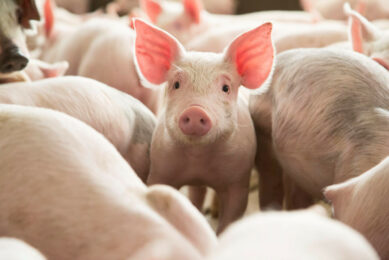Trace mineral nutrition needs update

Current trace mineral nutrition is merely based on NRC 1994 data, which were established with research data from the sixties. Since then a lot has changed and an update would be beneficial to animal nutrition.
“Since agriculture started to industrialise in Northwestern Europe and left the principle of ‘land bound production’, an imbalance between input and output of nutritional soil requirements has occurred”, says Wim Beeks, regional manager for Alltech in the Netherlands.
“Current zinc and copper levels used in animal feed and drinking water led to excessive amounts in soil and surface water. Both at national as well as European level targets have been set in order to reduce levels”, he adds.
Mini seminar
To discuss these matters Alltech organised a small scale seminar “Current trace mineral nutrition is not feasible!” in St. Oedenrode in the Netherlands, where the subject was discussed by speakers from different disciplines.
Paul Römkens of the Soil Science Centre Alterra-WUR highlighted the over-supplies of Copper and Zinc in Dutch soils.
“Several measures have been taken in the past to reduce excretion of these minerals through the manure into the soil. Manure laws have been introduced and feed applications have been lowered. Despite these measures we still find an increase of copper and zinc excretion in pig and cattle manure, which is difficult to explain. For cattle we know that the oversupply of copper for a great deal is caused by washing hoof bath fluid into the manure pit. For pigs there is no clear reason why mineral content of the manure increased,” Römkens told the audience.
If the Dutch soil and surface waters need a reduction of these minerals rather strict measures are needed to obtain a desired quality. “Reduction is only possible with manure reduction, and feed input reduction”, Römkens said. He believes that using organic minerals (bioplexes, chelates) are one of the solutions that might help reducing mineral levels in soil and surface waters.
EU legislation
So far the EU has authorised app. 2,850 feed additives (of which most of these have to be re-evaluated before Nov. 2010).
Of this vast number only 57 compounds of trace elements have been authorised containing 8 trace elements. Most of the authorisations contain inorganic source: Iron (Fe – 9), Iodine (I – 4), Cobalt (Co – 6), Copper (Cu – 7), Manganese (Mn – 8), Zinc (Zn – 7), Molybdenum (Mo – 2) and Selenium (Se – 2).
Of the 57 approved compound trace minerals only 10 are approved from organic sources: Fe (2), Cu (2), Mn (2), Zn (3) and Se (1).
Whether to use inorganic or organic sources depends on analysis, bio-availability and maximum contents of the product.
In the future applicants have to supply a detection method to prove the chelated content and to say something about the bioavailability of the mineral.
Now a supplier can claim a (chelated) product has x percent minerals, which could be present as 20% chelated and 80% of a cheap salt. That is going to change by requiring a certified detection method.
Modern food safety laws
Former EU Commissioner for Health and Consumer Protection David Byrne elaborated on feed safety of feed additives. “The EU has the most comprehensive food safety laws in the world and are an example to the world,” he said.
Byrne describes the modern food chain more as a labyrinth than a straight line of sources from the global market place. “Modern media also require a different approach of feed issues.”
In 2009 there were 4 rapid alerts in premixes. “Global trade on food and feed increases our dependency on each other. But feed and food operators carry the responsibility for safe food”, he said.
New guidelines required
Most current information on trace mineral requirements date from NRC 1994, which were based on old research from the nineteen sixties, said Lode Nollet, Alltech’s technical manager for the Benelux.
“Back than minerals were fed to avoid deficiency problems. Today, however, we feed minerals to optimise health and performance of the animal”, Nollet said.
Alltech experimented with replacing all inorganic minerals by bioplexed (chelated) minerals. General performance was not negatively affected and in many cases feed conversion ratios improved.
“A chelate masks the positive charge of a mineral, which makes it easier to pass through the negatively charged mucus layer in the intestinal tract. This negatively charged layer works as a protection of the animal against undesired minerals such as cadmium or lead,” Nollet explained.
Nollet said that bioplexed minerals reduce excretion by 40%. “Next to that they are more available to the animal, give better retention of the minerals, are environmentally friendly – reduce excretion and in a step down program are cost effective as well.”











